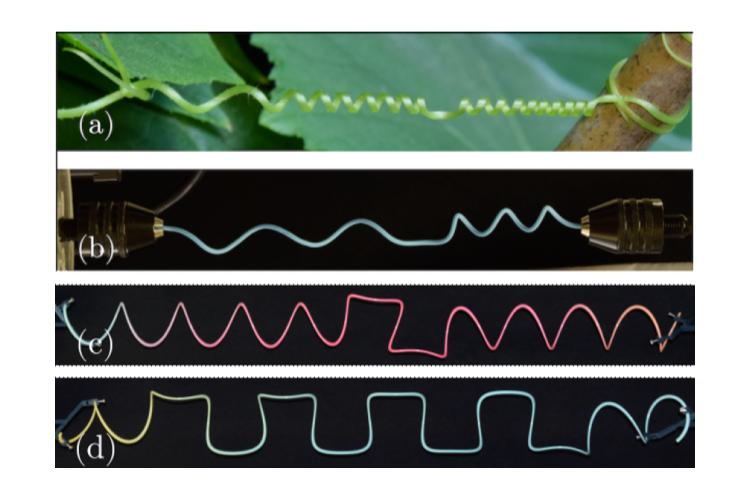- Imprimer
- Partager
- Partager sur Facebook
- Partager sur X
- Partager sur LinkedIn
Séminaire
Le 18 novembre 2024

Emilien Dily (Laboratoire Reproduction et Développement des Plantes, Lyon)
Helical rods (elastic springs) provide a simple system that highlights complex non-linear phenomena occurring right at our fingertips. The unwinding of helical rods leads to the formation of a perversion (Video). This topological defect connects a helix of positive chirality to one of negative chirality, as seen in the tendrils of climbing plants such as cucumbers or vines (Fig. 1(a)). Upon rotation, the perversion can migrate along the rod, enabling a complete reversal of helix chirality (Fig. 1(b)). Mechanical measurements conducted during this chirality reversal revealed that the perversion migration occurs at a pseudo-constant axial torque [1]. The overall mechanical behavior of the system, along with a phase diagram of coexisting helices with opposite chiralities, was reproduced using a biphasic model. This model consists of two phases—helices of opposite chiralities—linked by the perversion as the interface. In this context, configurations with multiple perversions can also be obtained (Fig. 1(c,d)). Finally, the writhing instability observed in plants is revisited within our model, providing a mechanical framework to study the dynamics of tendrils and the curvature generation that leads to helical patterns in tendril-bearing plants.
[1] Emilien Dilly, Sébastien Neukirch, Julien Derr, and Drazen Zanchi Phys. Rev. Lett. 131, 177201
Contact: Emmanuel Siéfert
Date
11:00
Localisation
LIPhy, salle de conférence
- Imprimer
- Partager
- Partager sur Facebook
- Partager sur X
- Partager sur LinkedIn